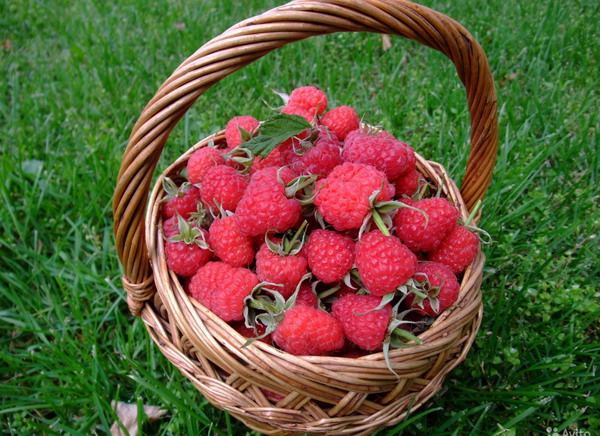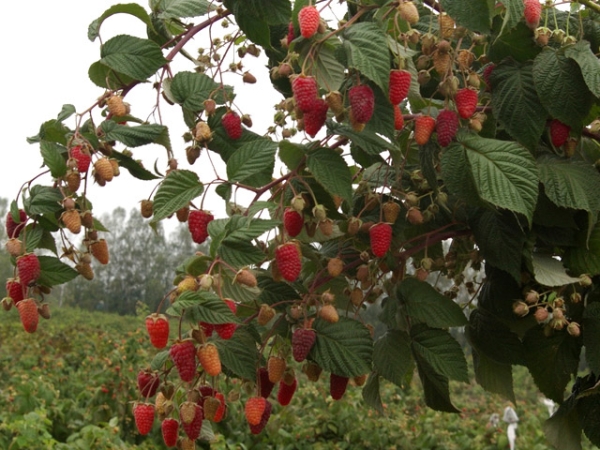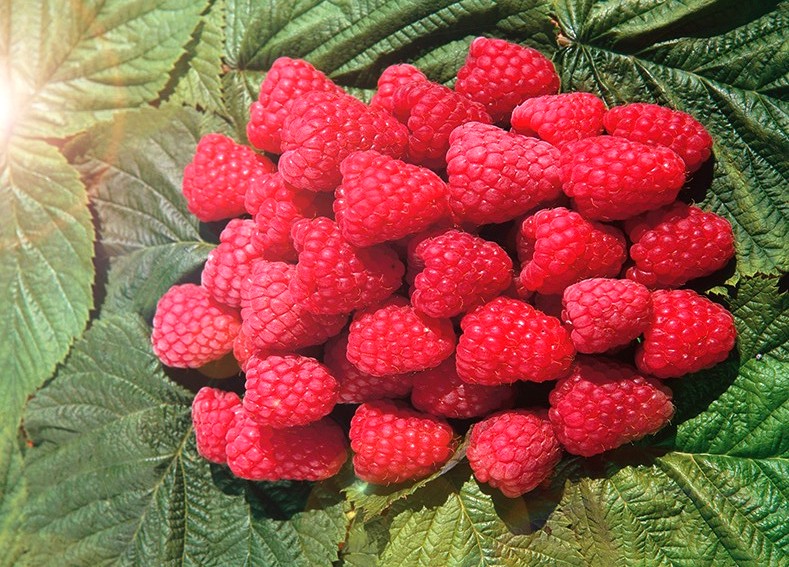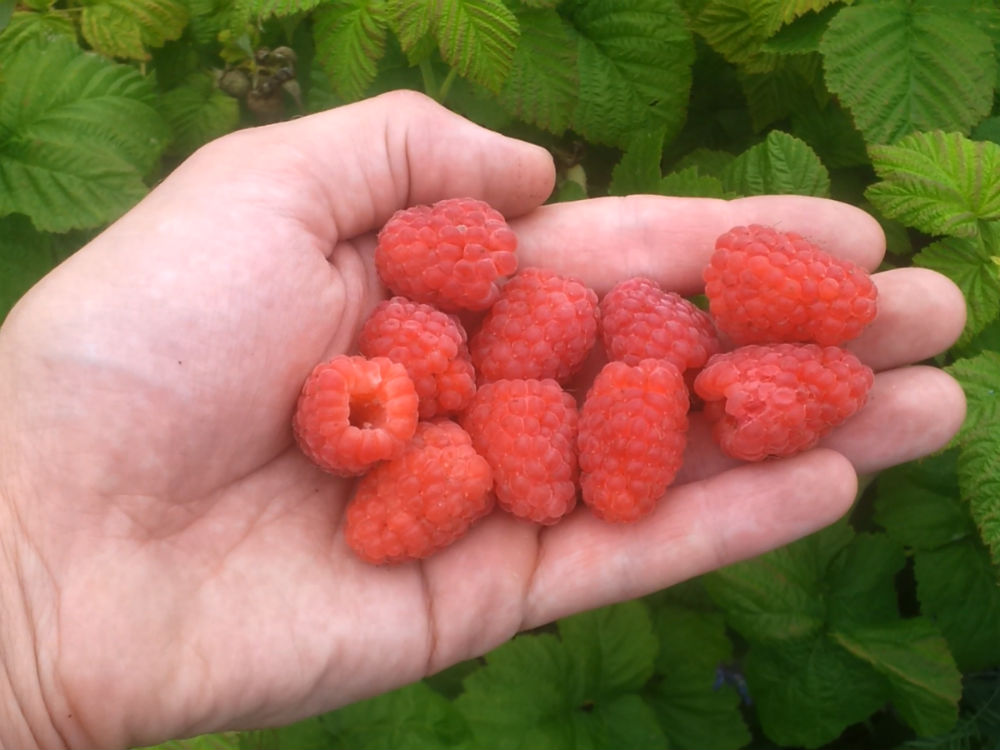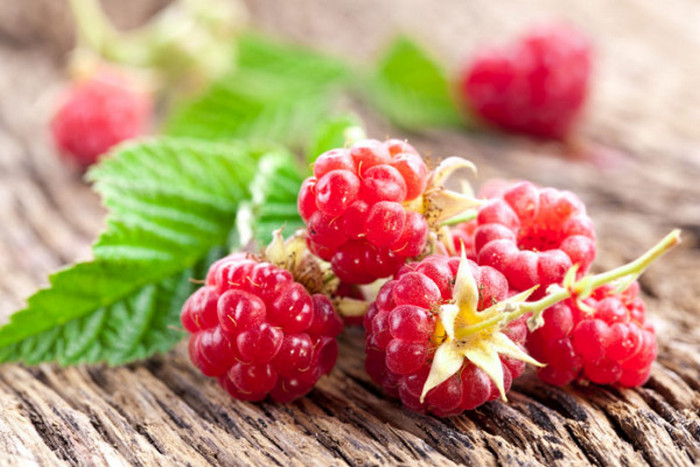Content:
A high-yielding raspberry variety Patricia adapted to Russian conditions. The sweet, aromatic, large berries make the variety popular with gardeners. The article discusses ways of care, characteristics, pros and cons, reviews of the Patricia variety.
Description
Raspberry Patricia is grown by gardeners in Russia and Europe. The plant is adapted to local climatic conditions, tolerates hot summers and frosty winters well. Young raspberries after 3 years of age begin to give a large harvest. Raspberry Empress description:
- Tall bushes, up to 2 m in height;
- There are no thorns on the shoots;
- 15-20 berries are formed on one fruit branch;
- The leaves of the plant are wrinkled, bright green;
- Every year about 10 replacing shoots grow, up to 4-root;
- Raspberries are large, shaped like a cone, weighing up to 14 g;
- Bears fruit once a year;
- Over the summer, you can collect from 5 kg of raspberries from each bush.
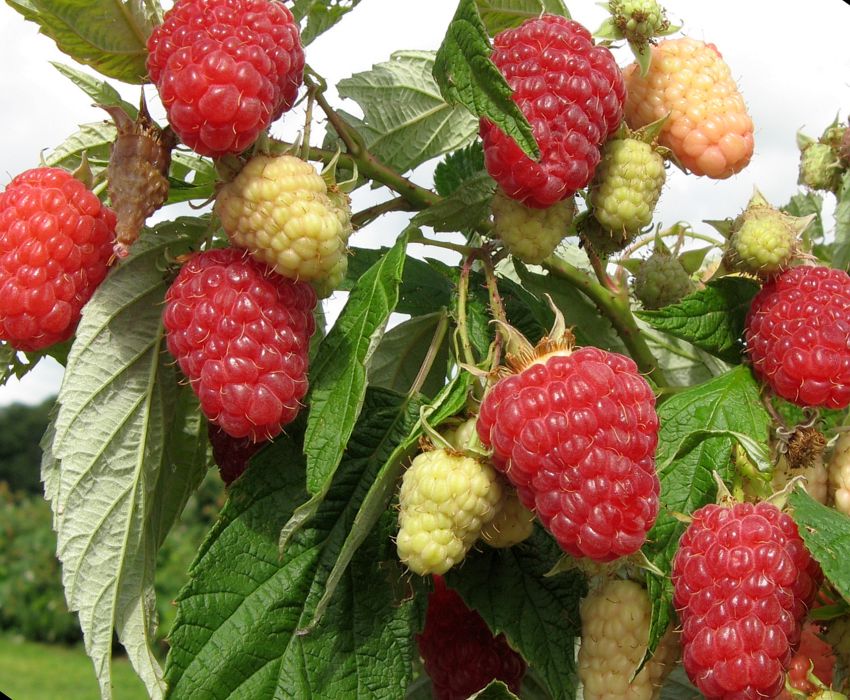
Characteristics of the Patricia variety
A distinctive feature of the variety is the fruiting period. Raspberries begin to ripen from the beginning of June and continue to harvest until the second decade of August. Many gardeners call this variety remontant, but Patricia raspberries bear fruit only from last year's shoots, in contrast to remontant varieties.
Planting raspberries
Raspberry varieties allow growers to choose the best garden crops for planting based on adaptation, vitality, yield and berry flavor.
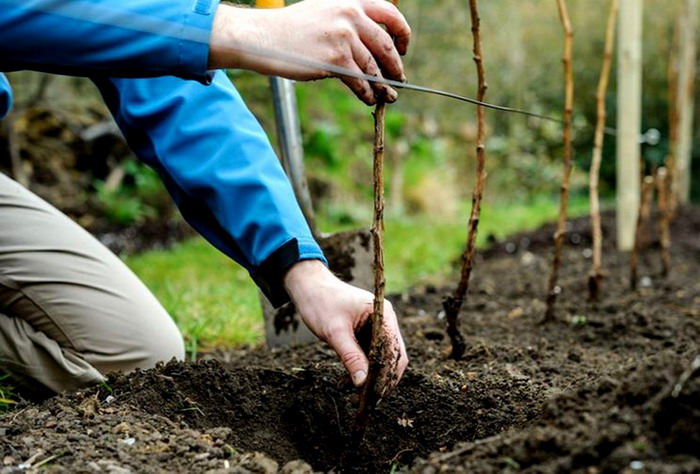
Planting raspberries in autumn
In order for new bushes to take root in a new place, gardeners need to follow tips for planting and caring for the plant. Disembarkation recommendations:
- Soil preparation. The best option for planting Patricia raspberries is loose soil or black soil, with a minimum level of acidity. Clay soil will not work - the plant will not be able to take root well and give a large harvest;
- Before planting, the bushes must be watered with water so that the roots are moist. It is recommended to plant the seedling immediately after purchase. But the raspberry itself, after planting, does not tolerate high humidity;
- The soil must be well sprinkled with fertilizers (up to 5 kg for each bush);
- There should be at least 3 buds on the base of the seedling. Choose a plant with a developed root system - so the chances that the shrub adapts faster when planting are higher;
- The most favorable period for planting is autumn. They begin to plant from September 15 until the first frost. Autumn planting of bushes allows the plant to prepare for the new season during the winter;
- A distance of 0.7 m or more should be made between each raspberry bush. The width between the rows is more than 1 meter.
Planting instructions for the Patricia variety:
- Form a small hole 0.5 m deep, 0.4 m wide;
- Put compost at the bottom of each hole, fill a third of the holes with it;
- The seedling is planted together with an earth lump, with which the raspberry bush was bought or dug out for planting, the roots are carefully laid out on the bottom of the hole;
- Next, you should tamp the soil so that the bush holds well;
- Form a round hole with a diameter of 40 cm around the bush;
- Water each seedling with water (up to 10 liters per bush);
- Sprinkle sawdust over the soil to retain moisture.
After planting, raspberries should overwinter. The variety tolerates severe frosts (up to 30 C). In case of a sharp cold snap or frost, it is recommended to close the shoots.In winter, you can bend to the ground and cover with snow.

Raspberry care rules
Raspberry Patricia care rules
Raspberry Patricia annually brings a large harvest of delicious and fragrant berries. Proper plant care will allow gardeners to increase the fruiting period and yield of the variety.
Watering rules
Excessive moisture in the roots leads to negative consequences: the berries rot, the yield decreases. It is recommended to water the bushes sparingly, after the soil dries out. Weed holes should be weeded, loosening should be done, and soil mulching should be done in hot weather.
Pruning bushes
The Patricia variety begins to develop well with proper care. The branches are long, but not very strong, so it is necessary to tie them to the trellis. When the stems reach a length of 1.8-2 m, pruning to the 1.6 m mark is recommended.
Fertilizing the soil
The land needs to be fertilized annually. To do this, use humus, peat mixed with urea. It is undesirable to use nitrogen or mineral fertilizers. Nitrates accumulate in ripe berries. In the summer, during the flowering period, fertilize with fermented mullein infusion at the rate of 1:10.
Loosening the soil
For better growth of the bush, it is necessary to take care of the soil: get rid of weeds in a timely manner (can be carried out immediately after pruning), loosen the soil for aeration. Be sure to carry out the procedure after fertilizing the soil.
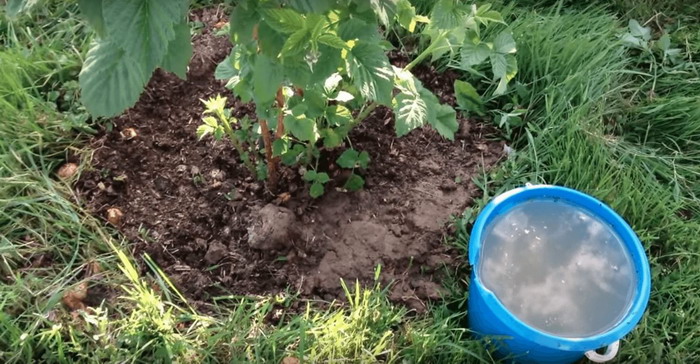
Watering Tips
On a note. The rules for caring for Patricia raspberries are simple and do not require special skills from gardeners. If you follow the recommendations, raspberries will delight you with a rich harvest of fragrant and large berries.
Possible diseases and pests
The gardener should regularly inspect the bushes for pests and plant diseases. If pests are found, the affected bush is treated with the use of special chemicals.
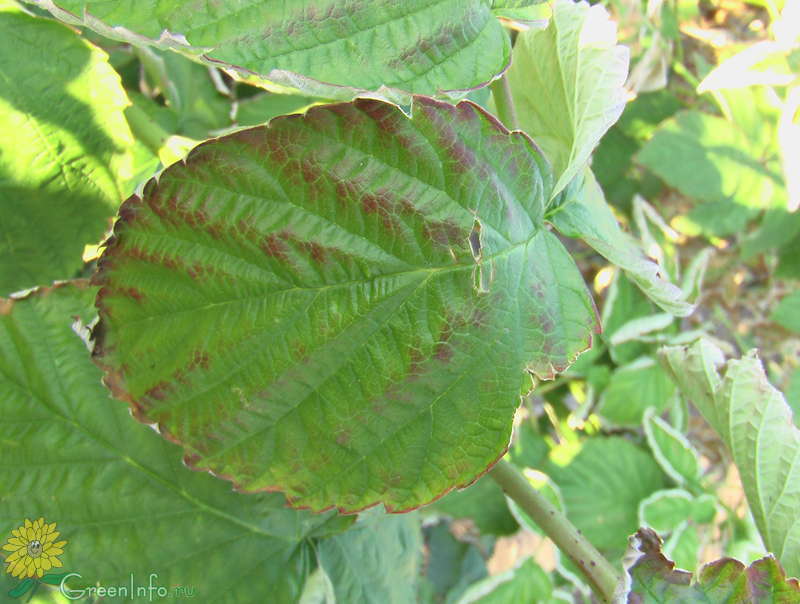
Raspberry disease
The Patricia variety can be infested with the following diseases and pests:
- Fungal spores;
- Larvae of gray flies;
- Weevils;
- Kidney moth;
- Raspberry bugs.
When an infection appears on the plant, it is necessary to treat the affected area with a urea solution or Bordeaux liquid. Severely diseased branches are best removed and burned to avoid spreading the disease. Careful and regular inspections will help growers avoid plant diseases and preserve their crops.
On a note. If mold appears on the berries due to high humidity, it can spoil the harvest. Affected berries and leaves should be removed immediately.
Harvesting
In any business, the result is important. After proper care of Patricia's raspberries, she will delight you with an unprecedented harvest of delicious berries. Ripe raspberries with juicy pulp begin to be expected with the onset of the summer season, and already in the first decade of June, you can enjoy fresh raspberries.
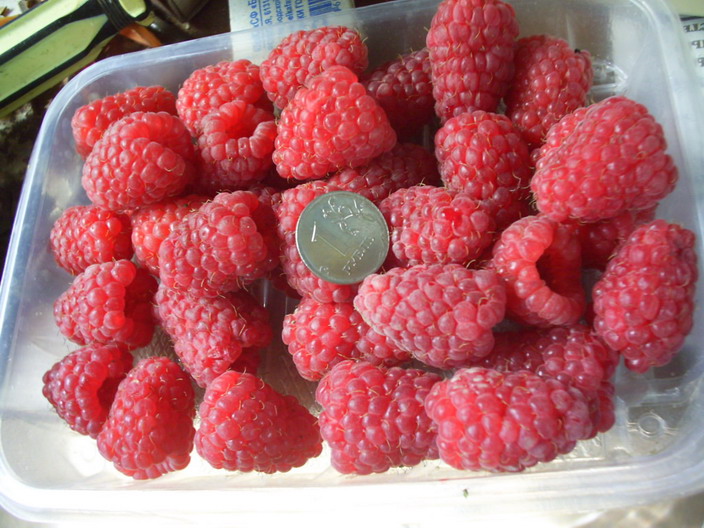
Raspberry harvest Patricia
It is used for cooking jams, preserves, compotes. The flavor is rich and sweet, so less sugar needs to be added. It is good to freeze raspberries for future use in the freezer.
The structure of the raspberry is elastic, conical, elongated. After collection, they can be stored in a bucket for several days without losing their presentation. The berries do not tolerate transportation well; it is recommended to pluck them with the stalk for sale.
Note. The berries do not crumble after ripening, but it is better to collect ripe raspberries in a timely manner. The large weight of the berries makes the thin and long stems heavier.
Pros and cons
Most gardeners prefer to breed Patricia raspberries. The positive characteristics of the variety made the Patricia raspberry popular in Russia and Europe. The main goal of every gardener is to get a big harvest.
The advantages of the variety:
- With proper care, the plant develops intensively;
- High annual yield already three years after planting the bushes (one bush gives from 4 to 8 kg);
- Large purple berries, cone-shaped;
- Easy care for shoots;
- Frost-resistant variety, it can be grown in many regions of Russia. Raspberry Tarusa Patricia can withstand frosts up to 30 degrees;
- Delicious and aromatic berries, with a minimum content of seeds in the pulp;
- Bushes do not need to be planted in the shade. In open areas, foliage does not burn or turn yellow. The amount of light does not affect ripening and yield;
- Ripe berries do not crumble for a long time, do not disintegrate during harvesting, retain their original appearance;
- Long fruiting period: fresh berries can be picked from early June to August;
- The variety is resistant to many diseases.
Among the disadvantages are:
- Large raspberries have poor transportability, berries are difficult to release for mass production;
- In the event of a rainy summer or over-watering, there is a great chance that the crop will start to rot;
- It is recommended that the bushes be periodically examined for diseases. Infected branches can harm an entire bush. The fungus quickly spreads to healthy leaves;
- Due to the active growth of branches, bushes should be regularly trimmed, care for the holes around them;
- When using strong fertilizers, the taste of the berries changes, nitrates get into the raspberry pulp.
When describing the Patricia raspberry variety, it is worth noting that there are few shortcomings. Growing a plant does not require much time and effort from gardeners. It is important to follow simple guidelines when planting a plant, properly care for the bushes and harvest enviable crops every year.
For sale, such raspberries are harvested together with the stalks, so the berries retain their properties longer and do not deteriorate. Large berries, lack of thorns on the stem make harvesting a quick and enjoyable experience for gardeners.
Most reviews from gardeners about the Patricia raspberry variety are positive. Many people note the sweet taste of berries, raspberries are aromatic and large. The plant is not picky about weather conditions, it tolerates heat and frost well. If the summer is not sunny, the harvest remains large. There are peculiarities in planting and caring for a plant. With advice in mind, Patricia will be your favorite.
